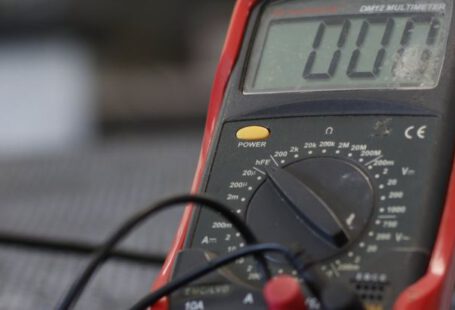In the ever-evolving landscape of technology, one concept that continues to generate excitement and intrigue is nanotechnology. This cutting-edge field involves manipulating materials on a molecular or atomic scale, promising groundbreaking advancements across various industries. Among the many areas where nanotechnology holds significant potential, one particularly promising application is in revolutionizing computer performance. By harnessing the power of nanotechnology, researchers are exploring innovative ways to enhance the speed, efficiency, and capabilities of computers, paving the way for a new era of computing.
### Enhancing Processing Speed and Efficiency
One of the key areas where nanotechnology can make a substantial impact on computer performance is in enhancing processing speed and efficiency. Traditional silicon-based microprocessors have long been the backbone of computing technology, but they are reaching the limits of their capabilities in terms of speed and energy efficiency. Nanotechnology offers a way to overcome these limitations by enabling the development of new materials and structures that can perform computations at the nanoscale.
### Shrinking Size, Expanding Capabilities
Another exciting aspect of integrating nanotechnology into computer systems is the potential to shrink the size of components while expanding their capabilities. As electronic devices continue to become smaller and more portable, the demand for compact yet powerful computing solutions is on the rise. Nanotechnology allows for the creation of ultra-small components with enhanced functionality, enabling the development of faster and more efficient computers that can fit into increasingly compact form factors.
### Overcoming Physical Constraints
Traditional computing technologies are bound by physical constraints such as heat generation and signal interference, which can limit performance and scalability. Nanotechnology offers a way to overcome these challenges by designing materials and structures at the nanoscale that exhibit unique physical properties. For example, nanomaterials can dissipate heat more effectively and reduce signal interference, leading to more reliable and energy-efficient computer systems.
### Enabling Quantum Computing
One of the most revolutionary applications of nanotechnology in computer performance is in the field of quantum computing. Quantum computers leverage the principles of quantum mechanics to perform computations at speeds far beyond the capabilities of classical computers. Nanotechnology plays a crucial role in the development of quantum computing systems by enabling the precise control and manipulation of quantum states at the nanoscale.
### The Road Ahead: Challenges and Opportunities
While the potential benefits of integrating nanotechnology into computer performance are vast, there are also significant challenges that must be addressed. One of the primary obstacles is the scalability of nanoscale technologies to mass production levels. Manufacturing nanoscale components with high precision and consistency remains a complex and costly process, requiring ongoing research and development efforts to streamline production techniques.
### Embracing the Future of Computing
In conclusion, the integration of nanotechnology has the potential to revolutionize computer performance in ways that were once thought impossible. By leveraging the unique properties of nanomaterials and structures, researchers are paving the way for faster, more efficient, and more powerful computing systems. While there are challenges to overcome, the opportunities presented by nanotechnology in the realm of computer performance are too significant to ignore. As technology continues to advance, embracing the potential of nanotechnology in computing can lead to a future where the boundaries of what is possible are constantly being pushed and redefined.





